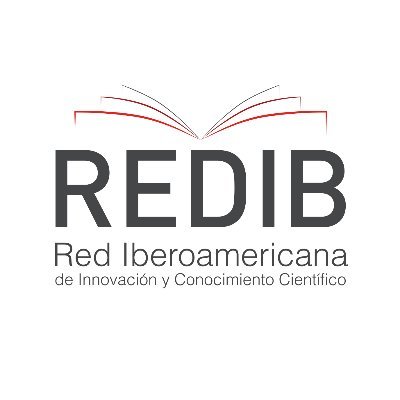Etho-epistemological approaches : communicational solipsism in the human-dog linkage
Keywords:
Ethology, epistemology, anthrozoology, communication, anthropocentrism, dog.Abstract
The aim of this work is to make visible some aspect of the human-dog relationship not generally themed from epistemological or ethological contemporary perspectives. In the case of household dogs, they are interpreted under two hegemonic conceptualizations emerging from the social imaginary: the machine animal and the anthropomorphic animal. Considering that both conceptions are equally problematic, and aiming for a different and not reductionist approach, we propose a
theoretical scheme to arrive into an understanding of the dog (and other non-human animals) as a subject. The basis
for such approach, from an interdisciplinary perspective, will be a number of elements from the cognitive ethology,
philosophical ethology and epistemology. Finally, we propose the concept of communicational solipsism concerning the human-dog linkage as a way of conceptually make visible a usual phenomenon that occurs when addressing behavioral disorders in the field of dog education/training.
References
Angenot, M. (2012). El discurso social, los límites históricos de lo pensable y lo decible. Buenos Aires: Siglo XXI.
Anzoátegui, M. (2018). El dualismo mente-cuerpo y la división humano-animal. En M. Campagnoli & L. Ferrari (Eds.), Cuerpo, identidad, sujeto, perspectivas filosóficas para pensar la corporalidad. La Plata: EDULP.
Anzoátegui, M. (2015). El problema de la condición de persona aplicada a animales no-humanos: antropocentrismo especista, subjetivdiad y derecho. La Plata: Memoria Académica FaHCE-UNLP.
Barandiaran, X., Di Paolo, E., & Rohde, M. (2009) Defining Agency. Individuality, Normativity, Asymmetry and Spatio-temporality in action. Adaptive Behavior, 17: 367-386. Versión disponible on line: pp. 1-11.
Broom, D. (1986). Indicators of poor welfare, British Veterinary Journal.
Broom, D. (2016). Sustentabilidad y sintiencia en relación con el bienestar animal. InfoVet, FCV-UBA.
Butterfield, H. (1982). Los orígenes de la ciencia moderna. Madrid: Taurus.
Descartes, R. (2004). Tratado del método, La Plata: Terramar.
De Waal, F. (2007). Primates y filósofos: la evolución de la moral del simio al hombre. Barcelona: Paidós.
De Waal, F. (2016). ¿Tenemos suficiente inteligencia para entender la inteligencia de los animales? Barcelona: Tusquests.
Díaz Videla, M. (2019). El valor de la vida de los animales de compañía: el vínculo humano-animal, más allá del especismo y de
consideraciones económicas. Revista Latinoamericana de Estudios Críticos Animales, 6(1), 244-276.
Díaz Videla, M. (2017). Antrozoología y la relación humano-perro. Buenos Aires: iRojo.
Di Paolo, E. (2005). Autopoiesis, adaptivity, teleology, agency. Phenomenology and the Cognitive Sciences, 429-452.
Ferrater Mora, J. (1951). Diccionario de Filosofía, Buenos Aires: Sudamericana.
Ferrari, H. R., & Anzoátegui, M. (2019). Apuntes para un post-especismo: más allá (ya no) hay monstruos. Ludus Vitales: revista de filosofía de las ciencias de la vida, 27(51), 83-98.
Ferrari, H. R., Lázaro, L., & Tarzia, C. (2018). Las cuatro preguntas de Tinbergen. La Plata: Facultad de Ciencias Naturales y Museo EDULP.
Ferrari, H. R. (2010). Cultura y bienestar animal. XXII PANVET.
Ferrari, H. R. (2010), La transdisciplina, una necesidad vital. InfoVet: Congreso de Bienestar Animal (FCV-UBA).
Ferrari, H. R. (2015). Ponerle vestido a un perro también es maltratarlo. Tiempo Argentino.
González García, J. C. (2000). Diccionario de filosofía. Madrid: Edaf. Vol. 252.
Harrison, R. (1964). Animal machines: the new factory farming industry, London: Vincent Stuart Publishers.
Heredia, J. M. (2014). Prólogo. Jacob von Uexküll, portavoz de mundos desconocidos en Uexküll en Uexküll, Jacob von Cartas
biológicas a una dama, Buenos Aires: Cactus.
Urquiza-Haas, E. G., & Kotrschal, K. (2015). The mind behind anthropomorphic thinking: attribution of mental states to other species. Animal Behaviour, 109, 167-176.
Lakoff, G., & Johnson, M. (1986). Metáforas de la vida cotidiana. Madrid: Cátedra.
Lahitte, H. B., Ferrari, R. H., & Banegas, C. P. (1998). Manual de Etología. La Plata: ECA.
Mangas, J. (2019). Protocolo de evaluación de bienestar en felinos domésticos (felis catus) (PEBf). Una herramienta que propone
mejorar la convivencia en el hogar desde la perspectiva de familia multiespecie. Actas del II Congreso Internacional de debate en
torno a los demás animales. Córdoba: ILECA.
Mangas, J. (2016). Uso del Portfolio como estrategia para generar, monitorear y acompañar el desarrollo de la empatía
cognitiva en el estudiante veterinario hacia la sintiencia animal, Tesina de la Carrera de Especialización en docencia universitaria
para ciencias veterinarias y biológicas. Buenos Aire: FCV-UBA.
Maschi, F., Carbone C., & Ferrari, H. R. (2019). De reactivo biológico al animal sintiente: el bienestar animal como cambio de paradigma
en la investigación biomédica y su impacto en los resultados. Analecta Vet, 21-31.
Mendl, M., Burman, O. H., & Paul, E. S. (2010). An integrative and functional framework for the study of animal emotion and mood. Proceedings ofthe Royal Society, Biological Sciences, 277(1696), 2895-2904.
Núñez, J. (2013). Hacia una naturalización de la agencia y la normatividad desde una mirada a los agentes mínimos. Revista diálogos, 41-
Schaeffer, J. M. (2009). El fin de la excepción humana. Buenos Aires: Fondo de Cultura Económica.
Stamps, J. A., & Groothuis, T. G. G. (2010). Developmental perspectives on personality: implications for ecological and evolutionary
studies of individualdifferences. Philosophical Transactions of the Royal Society, Biological Sciences, 365(1560), 4029-404.
Uexküll, J. von (2014). Cartas biológicas a una dama, Buenos Aires: Cactus.
Uexküll, J. von (2016). Andanzas por los mundos circundantes de los animales y los hombres. Buenos Aires: Cactus.
Van de Weerd, H., & Sandilands, V. (2009). Erratum to? Bringing the issue of animal welfare to the public: A biography of Ruth Harrison (1920-2000). Applied Animal Behaviour Science, 116(2-4), 306-306.
Varela, F. J. (1992). Autopoiesis and a Biology of intentionality. En B. McMullin & N. Murphy (Eds.), Autopoiesis & Perception (pp. 1–14). Proceedings of a workshop held in Dublin City University.
Wemelsfelder, F. (2007). The scientific validity of subjective concepts in models of animal welfare. Applied Animal Behaviour Science,
, 75-88.
Wright, R. (2007). Los usos del antropomorfismo. En F. De Waal, Primates y filósofos. Barcelona: Paidós.
Published
How to Cite
Issue
Section
The authors who publish in this journal accept the following conditions:
1. The authors retain the copyright and assign to the journal the right to first publication, with the work registered under the Creative Commons Attribution license, which allows third parties to use what has been published as long as they mention the authorship of the work and the first publication in this journal.
2. Authors may make other independent and additional contractual agreements for non-exclusive distribution of the version of the article published in this journal (e.g., inclusion in an institutional repository or publication in a book) provided that they clearly indicate that the work was first published in this journal.
3. Authors are permitted and encouraged to publish their work on the Internet (e.g., on institutional or personal pages) before and during the review and publication process, as this may lead to productive exchanges and greater and faster dissemination of published work (see The Effect of Open Access).









